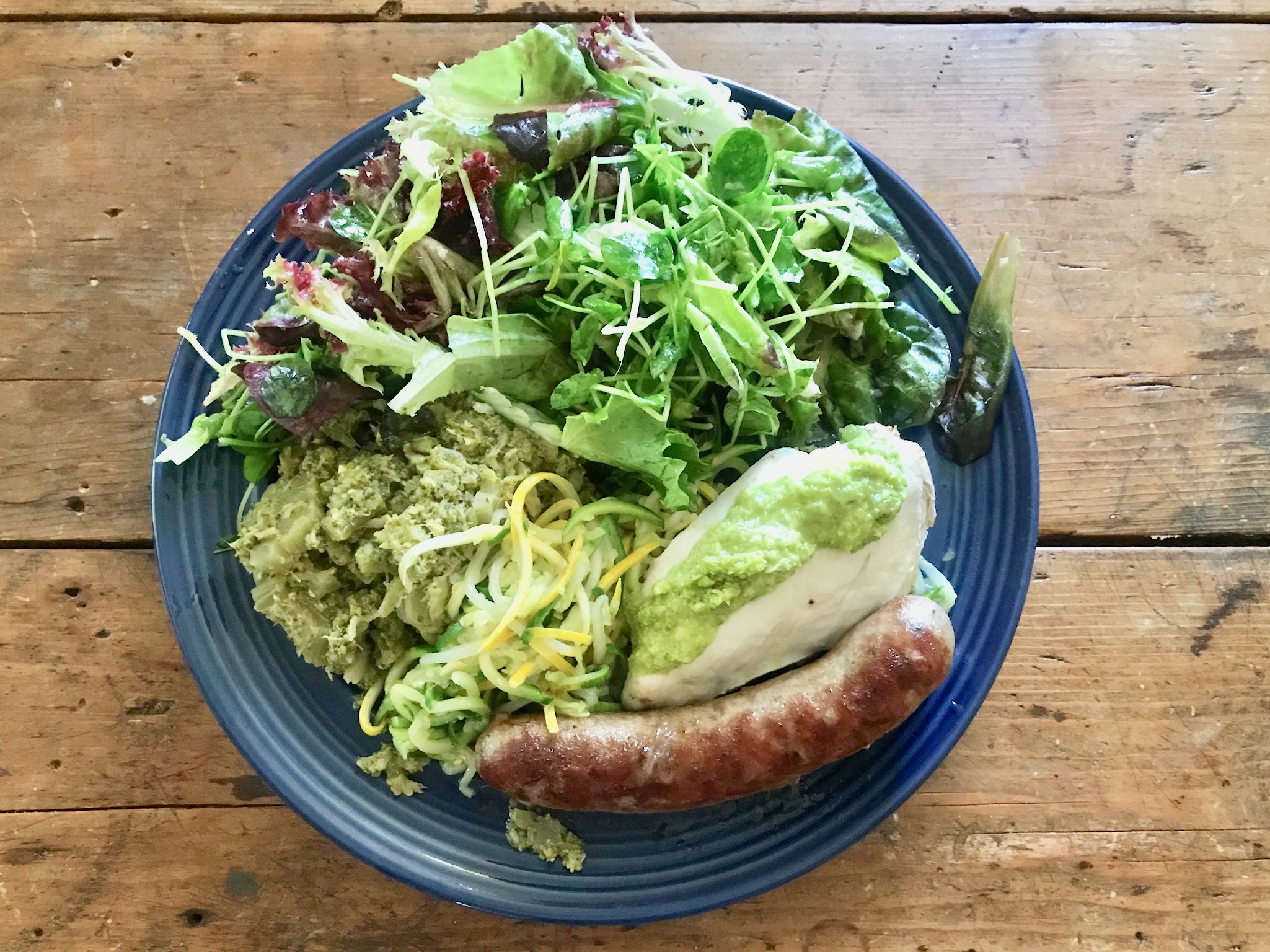Before I was diagnosed with Hashimoto’s thyroiditis, now, almost 10 years ago, my version of a “healthy” breakfast was much different than it is now.
Back in the day, I would start my day with a big moka pot of espresso and something yummy—perhaps, a baked good from the local bakery, like a thick slice of multigrain toast topped with avocado and olive oil, a blueberry corn muffin, or a cranberry scone. Or, I might have a bowl of zero-fat Greek yogurt mixed with fresh and dried fruit and a generous drizzle of raw honey. If I was feeling especially indulgent, I would start my day with a giant chocolate chip cookie from the same local bakery where I got the other baked goods. Because this was an old-fashioned baker who made everything in-house from scratch and used locally grown fruit, I assumed that I was eating “healthy”.
What I didn’t realize was that I was ingesting a steady infusion of sugar. Like it or not, flour = sugar. I never connected my brain fog or urgent need to nap approximately 20-30 minutes after my “breakfast” with what I was eating! Flour-based foods will spike blood sugar, as will coffee (in those who are sensitive; and most people are sensitive whether they realize it or not). This means that when your blood sugar crashes, you will be hungry again or experience cravings for sugar or carbs.
After I was diagnosed with Hashimoto’s, I was able to pinpoint various triggers for my chronic fatigue. I also learned that I had Non-Celiac Gluten Sensitivity (NCGS), for which I was tested, and which triggered tremendous fatigue after exposure to gluten.
This is when I began rethinking what a “healthy” breakfast means.
In the beginning, I still included home-baked, gluten-free treats in my breakfast repertoire. Over time, however, I lost my desire for them.
I then went through a period where I had a green smoothie with protein powder almost daily for 1-1/2 years. Interestingly, I would find myself hungry again 45 minutes to an hour later after my smoothie.
When I began including animal protein—chicken, lamb, turkey, beef, fish—at my first meal of the day on a regular basis, along with plenty of leafy greens and a source of healthy fat, such as olive oil, avocados or olives, I noticed positive changes. I could easily go 4-6 hours without eating, and I had better focus and sustained energy. No more afternoon naps needed!
In the last few years, I have found that eating a substantial first-meal-of-the-day sustains me up through dinner. I now eat 2 meals within an 8-hour window of time vs. 3 meals a day (catch as, catch can). And I do not snack between meals or after dinner, my last meal.
This has been an evolution. How well you are able to endure this way of eating (and/or if you even want to eat this way) will depend on your current health and hormonal status, activity level (sedentary vs. active), mindset re: food choices and meals, and food preferences and proclivities.
Whether you eat your first-meal-of-the-day at 6AM or at 12noon, here is what I have found to be the benefits of eating a large whole foods-based, protein-rich breakfast.
Benefits of Eating a Large First-Meal-of-the-Day
1. You support healthy weight management.
A 2020 study published in the Journal of Clinical Endocrinology & Metabolism found that eating a big breakfast (vs a large dinner) may help prevent obesity and high blood sugar.
Diet-induced thermogenesis (DIT) is process that measure the energy it takes to absorb and digest the food we eat, as well as to store and transport those nutrients to the cells in our body. DIT is a measure of how well our metabolism is working.
In 3-day study, 16 men first ate a low-calorie breakfast and high-calorie dinner. Then, in the second round, the meals were reversed. They ate a high-calorie breakfast and low-calorie dinner. The results revealed breakfast, (regardless of whether it was high-calorie or low-calorie) creates twice as much diet-induced thermogenesis than the same meal consumed at dinner. The low-calorie breakfast was also linked with increased appetite and cravings for sweets.
2. You stabilize blood sugar.
Managing blood sugar is the cornerstone of good health and weight management. When you eat a meal consisting of protein + fiber (aka, leafy greens) + healthy fat, you feel fuller, more satisfied and have better insulin control.
3. You have more energy, better focus and balanced mood.
Eating enough protein at your first meal of the day is key here. Animal protein, especially, contains energy and mood-boosting nutrients, including B vitamins, esp. B12, omega 3, heme iron and zinc. Animal protein also breaks down slowly in body, which promotes balanced blood sugar.
4. You tame cravings that often follow a low-calorie or high-sugar breakfast.
Eating a high sugar breakfast, whether toast, bagel, cereal, pancakes, frozen waffles of any food considered a traditional “breakfast” food, causes a spike in your blood sugar. When your blood sugar crashes, your hunger level will increase in frequency or intensity throughout the day, triggers cravings—and, usually, not for broccoli or salad!
5. You enjoy FREEDOM!
You will have freedom…. from obsessing about food between meals; from mood swings; from relying on willpower (to eat or not eat the right thing); from becoming so hungry because of low blood sugar that you overeat or binge when you do eat.


